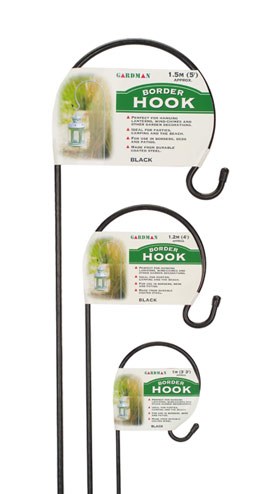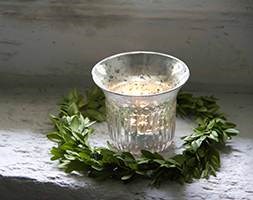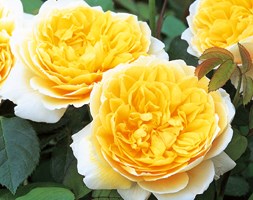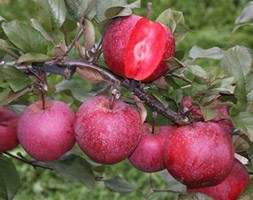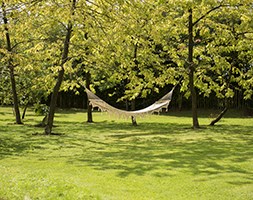Price reductions at Crocus
by Sarah - May 10th, 2014.Filed under: Crocus, Price Reductions.
Crocus has cut the price of these products
Papaver rhoeas (field poppy) was £2.49 now £1.49
Position: full sun Soil: well-drained, preferably poor soil Rate of growth: average Hardiness: fully hardy Once a common sight in cornfields, this brilliant red field poppy is perfect for a sunny wildflower garden or meadow, where it will self-seed freely. Profits from these seeds are used to protect existing wildflower areas and develop new sites where wildflowers can grow. In folklore field poppies were believed to cause thunderstorms. Garden care: When sowing seeds do not use a fertiliser since wildflowers prefer poor soils. In autumn after flowering cut the faded flower-heads down to the ground and compost the dead stems. Sow: March-May or September-October Flowering: August-September or May-July Approximate quantity: 5000 seeds.
Border hook was £3.99 now £2.99
A very helpful metal border hook for hanging things such as; lanterns, garden decorations and windchimes. Ideal for use outdoors on patios, in the garden and borders. Available in three different sizes Dimensions: Small – 100cm Medium – 120cm Large – 150cm
Vintage tea light holders was £9.99 now £8.99
Vintage tea light holders made from Antiqued glass. Measurements: Height – 8cm Width – 9.5cm
Rosa Charlotte (‘Auspoly’) (PBR) (rose Charlotte (shrub)) was £12.99 now £9.99
Position: full sun Soil: fertile, humus-rich, moist, well-drained soil Rate of growth: fast-growing Flowering period: June to September Other features: excellent cut-flowers Hardiness: fully hardy A compact rose with somewhat upright stems bearing mid-sized, cup-shaped blooms in a butter yellow shade. The flowers are very beautiful and have a reasonably strong Tea Rose perfume. Noted for its cold hardiness, this rose is a great choice for Northern gardens, or those that are exposed to severe winters. All our roses are grown in an open field and then dug up when the weather conditions are right in October or November. Some suppliers send out their roses as ‘bare root’ plants (ie without pots or compost), but we pot ours up as it helps to keep the roots hydrated and in good condition. As they are dormant throughout the winter, they will not produce any new roots until spring, so don’t be surprised if the compost falls away from the roots when you take them out of their pots. The roses can be kept in their pots throughout the winter provided they are kept well fed and watered, however ideally they should planted out as soon as possible. They will already have been cut back so no further pruning will be required, apart from snipping off any tips that have died back. Routine pruning can begin in late winter the year after planting. Garden care: If planting in winter, choose a frost-free spell when the soil is not frozen. Roses are quite deep-rooted plants so dig a deep hole roughly twice as wide as the plants roots and mix in a generous amount of composted organic matter. A top-dressing of a general purpose fertiliser can be worked into the surrounding soil and we also recommend using Rose Rootgrow at this stage to encourage better root development. This is particularly important when planting into a bed where roses have previously been grown as Rose Rootgrow is said to combat rose sickness (aka. replant disease). Remove the plants from their pots and gently spread out the roots before placing them in the centre of the hole. Try to ensure that the ‘bud union’ (the point where the cultivated rose has been grafted onto the rootstock, and from where the shoots emerge) is at soil level. You can judge this quite easily by laying something flat, like a spade handle or bamboo cane, across the top of the hole. When they are at the right height, back-fill the hole, firming the soil down gen
apple Tickled Pink (‘Baya Marisa’) (apple) was £19.99 now £12.49
Position: full sun Soil: fertile, well-drained soil Rate of growth: fast-growing Ultimate size on M26 rootstock: 3 x 3m (10 x 10ft) Flowering period: April and May Hardiness: fully hardy Pollination Group: C – flowering mid-late season Suitable for both eating and cooking, this new apple variety has a red skin an attractive reddish-pink flesh. It has a crisp texture with a good flavour balance between sweet and acid and a mild aroma. Good for producing red juice, making colourful apple chips or adding a touch of colour to tarts and salads. Garden care: Keep the base of the tree weed free, fertilise at the beginning of each year and water regularly during hot, dry spells. Remove damaged or crossing branches during the dormant season. Pollination Information: This apple belongs to pollination group C, so you will need to plant one other different variety of apple to guarantee cross pollination, and a subsequent bumper crop. Ideally this should come from the same pollination group, however it is possible to use one from group B or D as well.
Woven string hammock was £59.99 now £54.99
This ivory woven hammock will provide hours of relaxation in the garden. This attractive hammock provides a cosy and comfy space for you to sit back and enjoy all your hard work this Spring. This hammock is completely handmade with each and every stitch of the crochet hammocks being made in El Salvador by artisans, who try to keep their culture alive by applying traditional production techniques. This woven hammock can be hung from between two trees, posts or garden wall so long as the hardware and hanging strings are strong enough to hold the weight of the person using it. Please note the approx. capacity of the swing hammock is 120kg but please make sure secure and strong before use. How to hang the woven hammock: Between two trees or posts: tie a strong rope around the tree, make a knot, then reach the hammock’s eye and make another knot. Ideally, supports, posts or trees should be 25-30cm further apart than the length of the hammock. Prior to using your hammock please check all knots are tight and secure and carefully sit in it to make sure it has been installed properly. Although these fabrics are mildew and fade resistant, avoid it’s prolonged exposure to sunlight and rain. Over time, this would weaken the fabric and strings. When not in use, we suggest your bring the swing chair indoors. Dry thoroughly before storage. Hand washable with mild soap. Please note: rope and fixings not included.








